Discover the benefits of Intelligent material Management System
Advantages of IMMS™ are less handling of items through batch handling, saving staff from repetitive strain injuries; shelf content is controlled by staff through intelligent lifecycle management; both public and academic libraries can support better usage of shelf space. Libraries with floating collections avoid time-consuming rebalancing with IMMS™ real-time float management. Academic libraries can improve the use of closed storage areas with better utilization of shelf space and faster picking.
Pick Up to 285 Items/Hour
Save 2 Minutes on Each Circulated Item
60% Saved on Holds Management
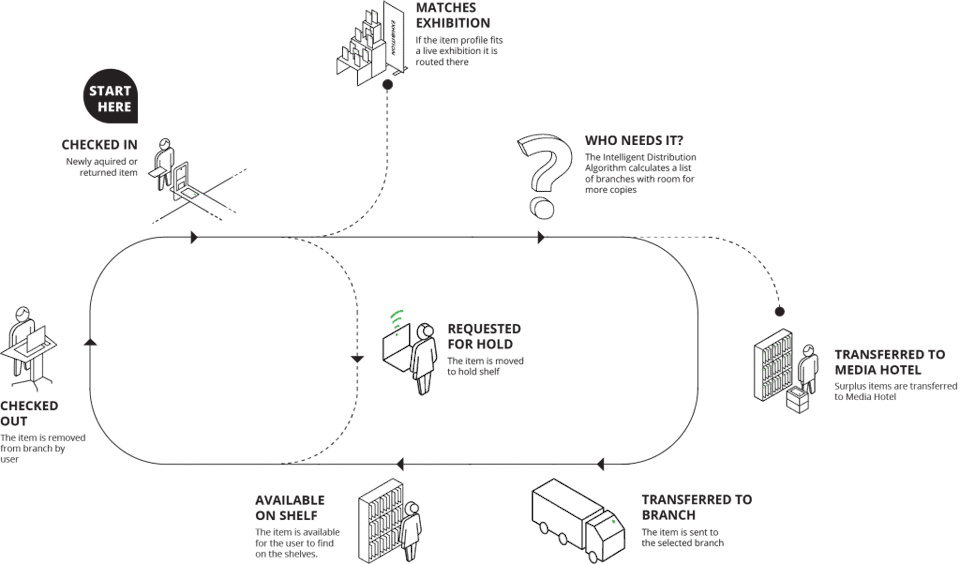
IMMS™ Maintains Attractive Displays and Exhibitions
Book Displays Increase Fiction Circulation over 90%
More and more public libraries are adopting the practice of displaying books as bookstores do. Studies show that a well-placed display can increase fiction circulation by over 90% while non-fiction goes up by 25%.
But staff also face challenges in maintaining attractive and well-used displays. The more successful a display is the more time has to be spent replenishing it and keeping it fresh. IMMS automates this, it registers which items are circulated and send requests to fill the empty space.
Fill-up can happen from the local branch, from the Media hotel, or from wherever the most suitable items are located. The display is structured in IMMS, from ILS exports or .csv files, and can be set up well in advance and be re-used again and again in different places.
Read more about the way Naestved Library is using displays to increase circulation here
Intelligent Management of a Floating Collection
Float Efficiently With The Intelligent Material Management System
When an item is received, the ILS sends a query to IMMS™ concerning which branch the item should be distributed to. In real-time, the IMMS™ calculates the receiving branch based on knowledge of all items’ locations, the rules set up by staff for the branch inventories, and the properties of each specific item. No more overflowing or depleted shelves.
If the item is on hold, this is handled in the ILS – thanks to IMMS™ in a paperless picking and pick-up process. Master data for bibliographic records, items, and holds, etc. are exchanged automatically between ILS and IMMS. In addition to this online requests for the optimal location for items during check-in are handled without notifiable delay, very fast.
Having an intelligently floating collection ensures attractive collections in all branches and caters to increased circulation.
Efficient Space Management
The Surplus Items Checks in at The Media Hotel
Stock on the open shelves fluctuates according to seasonal requirements. One library has a heavy use of their mysteries over the summer, but non-fiction does well when the students are in town. Although mysteries belong on the shelf throughout the year, having all copies available at all times is not the best use of open shelf space. IMMS secures efficient space management throughout the year and shifting demands.
So where does the overflow go when IMMS determines that the set maximum shelf space has been achieved? It goes to the Media “hotel” – an easily reachable central storage area where the items are ordered according to the modern warehouse management principles and can be picked and sent back in circulation at the high speed of up to 285/items/hr.

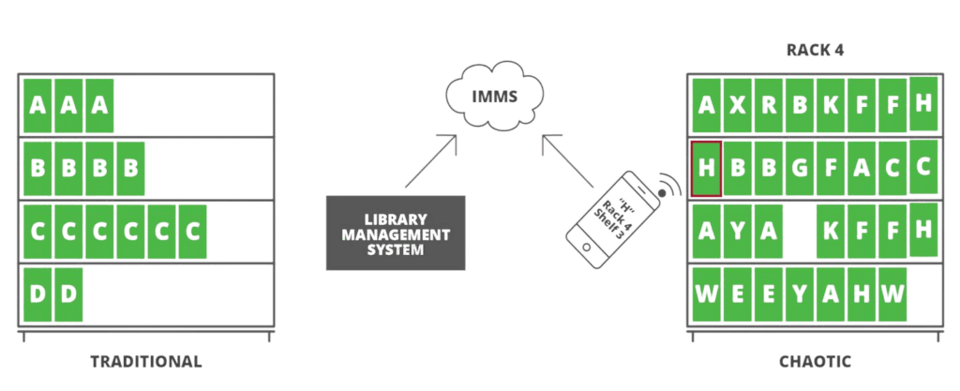
Chaos Means Control
The Media hotel is organized according to a proven warehouse management system of “Chaotic storage”. Rather than following an arrangement, such as by topic or call numbers, IMMS™ manages the items based on optimal shelving capacity, tracking each item to retrieve as needed.
Items in a storage location are organized according to a standard warehouse management technique called “chaotic storage,” where materials are placed within a bin or shelf unit without regard to call numbers or other conventional shelf ordering.
The inventory management system, however, tracks the exact location of each item so that it can be efficiently retrieved when requested. An example of Chaotic Storage management use is Amazon, where it is the secret behind Amazon’s astonishing fast order fulfillment, delivery capabilities, and accuracy.
Permanent and Remote Storage
Permanent and remote storage sites can also benefit from the efficient storage and space management IMMS™ offers.
The material can be stored in crates or directly on shelves and the system will know at all times where each item is located. Accurate statistics are managed either granularly through the IMMS™ interface or through tools in the ILS software. As with the Media Hotel, retrieval is efficient and fast, and status, as well as the present location, is always updated in ILS.
With extensive experience in Warehouse Management Lyngsoe can help you find the most efficient storage solution and seamlessly integrate it with your entire collection.
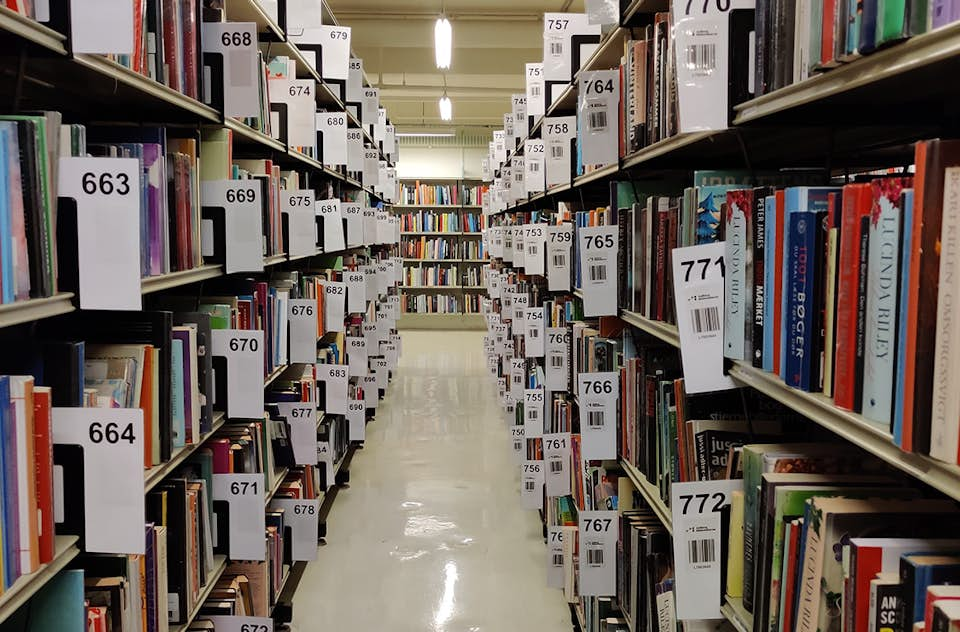
Easy and Ergonomic Handling of Moving Items
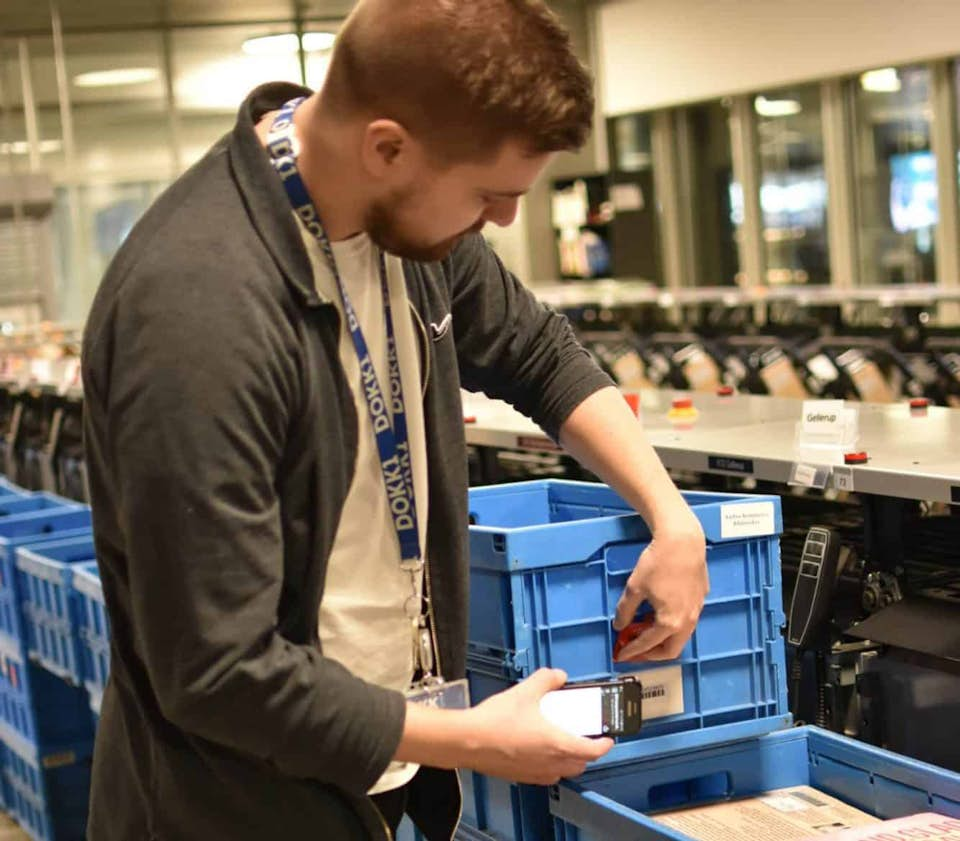
Batch Management Prevents Injuries
Batch management using the smartphone makes it possible to scan the content of a transport box directly to a storage or reservations shelf without scanning the individual items. The Intelligent Material Management System knows exactly what is in each box or on each cart at all times.
Technology today can take a lot of pressure off staff, not only does an AMH take the heavy lifting away, but Ergo Carts™ make reshelving easy and ergonomic – no more awkward angles for your back.
Batch management saves precious time for staff, but also preempts the, for library workers, all too common repetitive stress injuries in shoulders and back. The only time a shelver handles an individual item is when finally shelving it and even then precious energy is spared on always knowing there is space for the books on your cart and never having to relocate entire shelving units just because a certain subject has grown organically.
Take Control over Your Shelves
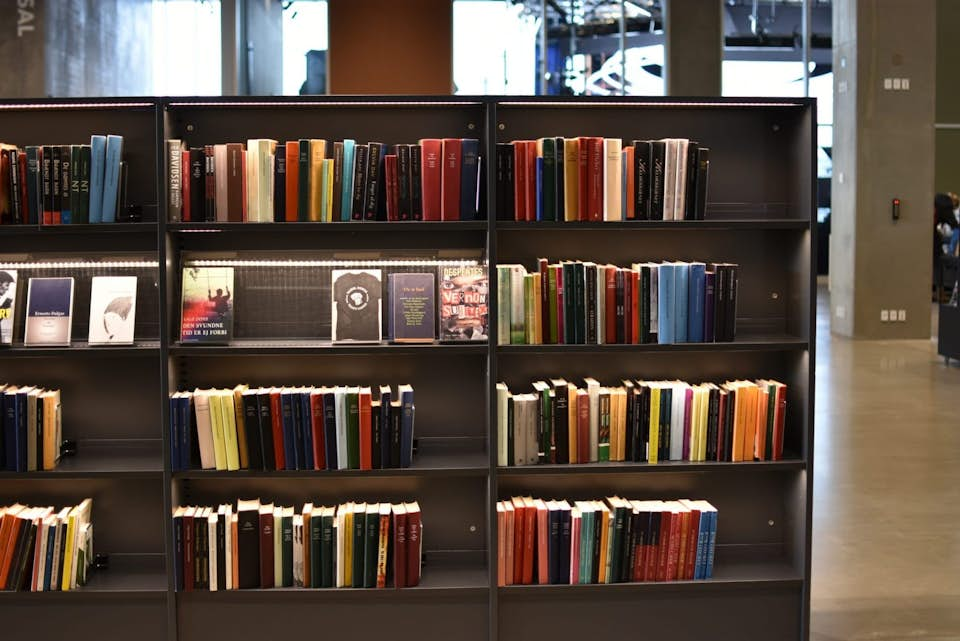
Maintain Attractive Shelf Displays With Imms™
Nice and tidy shelves, with a good fill rate and a suitable number of copies per title, is something most libraries try to achieve to welcome and inspire patrons.
However, pinched budgets, heavy use of popular items, and not enough time to tidy the shelves become daily challenges in many libraries.
With IMMS™ it is possible to control the library shelves, so they are never overflowing or depleted, and copies of new books get evenly distributed. While old and careworn items make it to a paperless weeding list for further inspection.
Track And Trace With Imms™ Means Happy Patrons
One week before the introduction of IMMS Aarhus and Copenhagen City libraries recorded 560 inquiries from disappointed users not being able to find material on the expected shelf.
After introducing IMMS™, this figure went down by over 60%. This is due to the granularity of IMMS™ tracking system and its industry-standard logistics management powered by Lyngsoe Systems knowledge.
Both patrons and staff will appreciate books being in their right place and being able to engage in positive dialogues, instead of looking for books in vain.

Easy and Paperless Management of Hold Shelves

Fast and Paperless Batch Handling of Items
One of the first benefits the Helsinki libraries noticed after implementing IMMS™, was how fast it is to shelve holds. Holds are paperless and as IMMS™ batch tracks each item in the transport box it is possible to shelve directly without handling each item.
No more putting in order and managing printed paper slips. Items on holds shelves are also placed according to the chaotic storage, and when the title has been (batch) checked onto the RFID coded holds shelf, the patron is informed of title, author, and shelf number as well as hold expiry date through email or SMS/text message. The system does not allow a patron to check out a title reserved for someone else.
Taking down holds not being picked up before the expiry date is equally simple and paperless.
Want to learn more? Download product sheet to explore further information
Monitor Your Collection with Data Based Lifecycle Management

IMMS™ Automated Lifecycle Management Keeps The Collection Dynamic And Alive
Automated lifecycle management is a built-in function in IMMS™. Using historical lending trends of the current material stock. It helps to manage an item’s life cycle from purchase to end-of-life. IMMS™ informs you of the current lending trends of each title, creating actionable reporting. Popular titles bought in multiple copies go out of fashion after a while, and fewer copies are needed.
Conversely, titles can become more popular than expected, and the reservation queue suddenly becomes too long, creating a need for more copies. The automated life cycle management handles these challenging tasks by a granular set of rules that are defined by staff.
This allows the system to constantly monitor all titles, automatically changing categories if needed, and alerting the library staff when a title has reached a certain stage in its life cycle.
Evidence Based Decision Making
Electronic resources have strong and detailed reporting, giving staff actionable evidence of use and non-use of titles and collections. However, this is not as clear with the library’s print collections.
IMMS takes physical collection metrics to a new level with over 60 preset reports giving data on all aspects of material handling from the “big picture” overview of the collection, down to the movements (or lack of movement) of each individual item.
Which books are circulated through holds and which are browsed from shelves? Which titles have been bought just-in-case and never been checked out at all? Which shelving units are groaning under far too much material and which have space for a little more?
Despite the growth of full-text downloads, academic libraries still have hundreds of thousands of physical books and only the traditional integrated library system (ILS) to optimize their collection. IMMS™ informs you in detail of all aspects of the physical collection, and industry strength automation will put you in control.
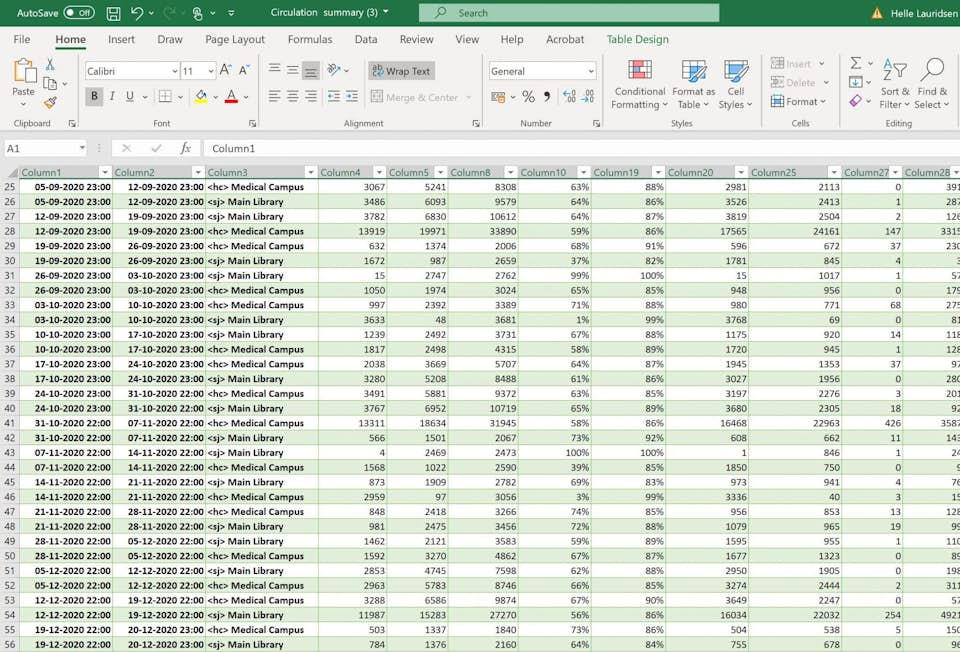
Control It All with a Mobile Device
One App to Rule It All
The daily logistics work of the library is managed through the IMMS™ app, which connects real-time through to the cloud-based IMMS™ system.
Digital, continuously updated picklists in correct walking order, saves lots of time retracing your steps or looking for items already picked by a colleague.
The RFID/Barcode reader ensures that all item movements are tracked to the location, so staff, at all times, know where each item is located, that be on the shelf, trolley, transport tote, or in movement between branches.
IMMS™ ease the workflow for staff throughout the library. Branch staff benefits from direct shelving of holds with no handling of individual items, as well as never risking depletion of stock. The smart phone app ensures that IMMS™ continuously keep track of item location.
Reasons To Implement IMMS
Service To Your Community
Automatically control the collections in each branch
Spend time on people, not books
Automatically control the collections in each location
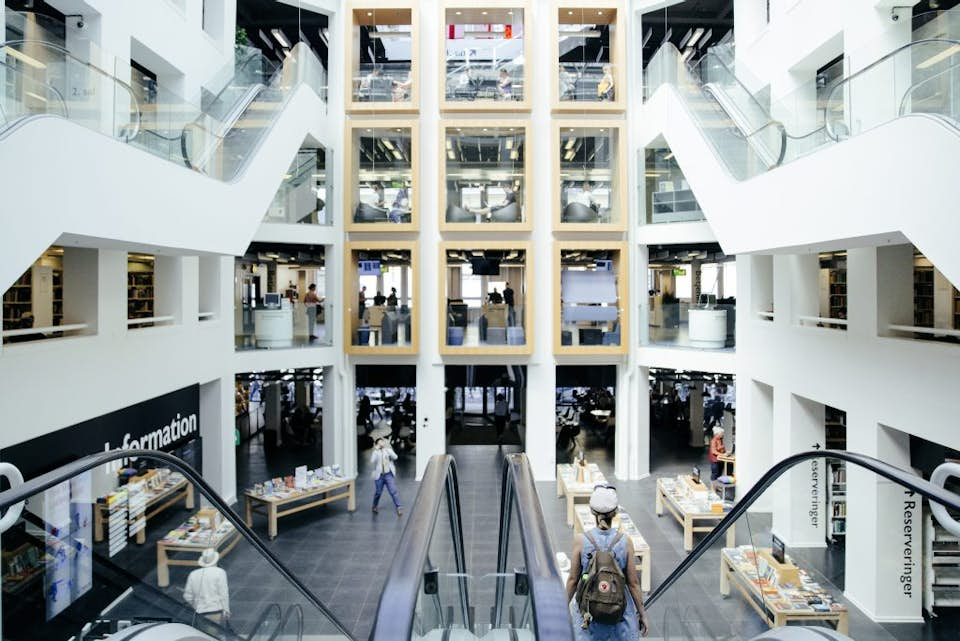
Leverage Modern Logistics
Sophisticated modern logistics integrated in your ILS
Track and trace prevents loss of items
Efficient storage management
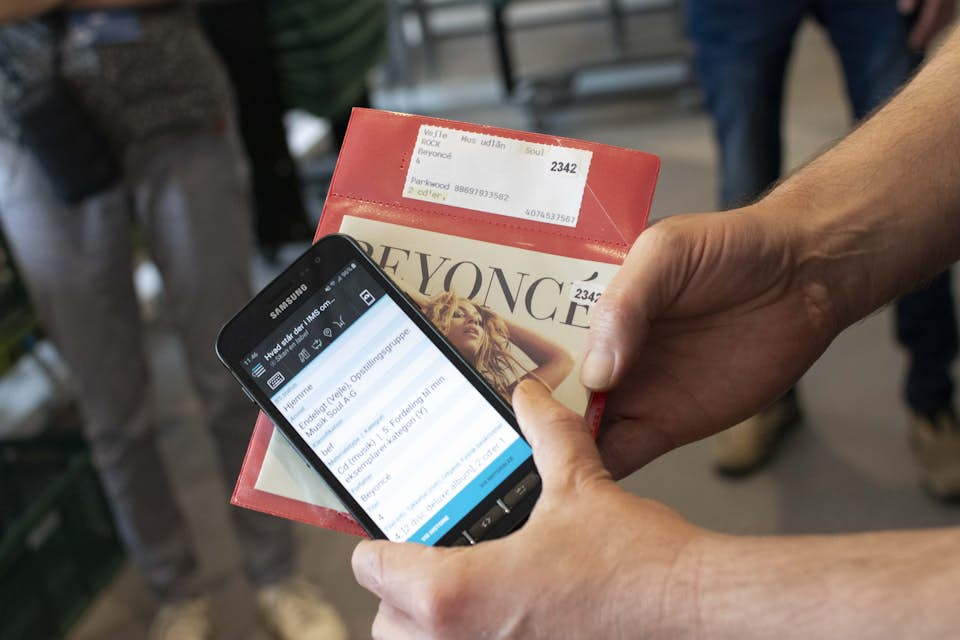
Free Up Staff
Save up to 40% on material handling
Time spent on each circulated item approx. 0.042 hours
Pick rate in material hotel up to 285 items/Hour

Meet the Libraries
that are Leading the Way
Helsinki City Libraries
One of the biggest benefits right from the beginning was paperless processes and batch handling. Time spent on handling items for shelving was cut in half and the time spent on holds or reservations was cut from 30 minutes per box to 5 minutes. Given that Helsinki processes around 50,000 totes per year this released a huge amount of staff time.
Aarhus Public Libraries
“The introduction of the sorter and self-service returns led to extensive change of workflows throughout the library, simplifying material handling leading to a drastic fall in work related injuries from afflicting almost 100% of the circulation desk staff to 0%.”
Susanne Hansen, Aarhus Public Libraries
Increase the Value for Your Community
Improved Circulation
Real-time distribution of materials makes sure that titles go where there is space and where they are in short supply – leading to higher circulation and less staff time spent on rebalancing.
Sustainability and Improved Workflows
The entirely paperless work processes, not only save staff time, align with green policies, and eases workflows, but also prevent disease to spread through hold slips and shared picklists.
Less Routine More Service
Batch handling and intelligent distribution lead to staff spending less time on material handling like holds management and shelving leaving hands free for mission-critical alignment with broader community goals.
Curious about our solutions and how we can empower your library?
Explore the possibilities and unlock new opportunities by contacting us today.
